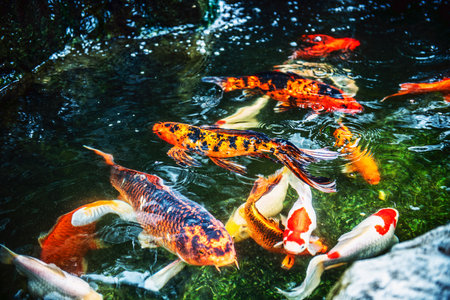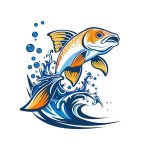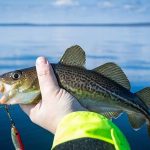1. Introduction to Soft Plastic Baits
Soft plastic baits have become a cornerstone in American fishing culture, offering unmatched versatility and customization for anglers of all skill levels. Whether you’re targeting largemouth bass in a quiet Midwest lake or chasing redfish along the Gulf Coast, soft plastics can be tailored to match nearly any fishing condition or species.
The Origins of Soft Plastic Lures
The journey of soft plastic lures began in the 1950s when innovative anglers started experimenting with flexible materials to mimic live bait more effectively. Over time, these early designs evolved into the wide variety of shapes, sizes, and colors we see today. Brands like Mister Twister and Zoom helped popularize soft plastics, making them a household name among American fishermen.
Why Anglers Love Soft Plastics
Soft plastic baits offer several advantages that make them a favorite among both freshwater and saltwater anglers:
| Advantage | Description |
|---|---|
| Realistic Action | The flexibility of soft plastics allows them to move naturally in the water, closely mimicking live bait. |
| Customizable | You can modify shape, size, scent, and color to match local forage or personal preferences. |
| Cost-Effective | Compared to live bait or hard lures, soft plastics are generally cheaper and reusable. |
| Variety | Available in countless styles—from worms and craws to swimbaits and creature baits—to suit different species. |
| Durability | Modern materials can withstand multiple strikes before needing replacement. |
Freshwater vs. Saltwater Applications
One of the biggest strengths of soft plastics is their adaptability across environments. In freshwater lakes and rivers, they’re commonly used for bass, crappie, walleye, and trout. In saltwater settings—like coastal bays or offshore rigs—they’re deadly on species like redfish, snook, flounder, and even striped bass.
Popular Uses by Water Type
| Water Type | Common Species Targeted | Popular Soft Plastic Types |
|---|---|---|
| Freshwater | Largemouth Bass, Crappie, Walleye | Worms, Tubes, Craws |
| Saltwater | Redfish, Flounder, Snook | Paddle Tails, Shrimp Imitations, Jerkbaits |
A Game-Changer for DIY Anglers
The rise of do-it-yourself soft plastic bait making has added another layer of appeal. With simple molds and a few ingredients like plastisol, colorants, and glitter flakes, anglers can create custom baits tailored specifically for their local waters. This DIY approach not only saves money but also adds a personal touch that many find rewarding.
If you’ve ever wanted to catch fish on something you made with your own hands, mastering soft plastic bait making is your ticket to that experience. In the next sections of this guide, we’ll cover everything from essential tools to advanced techniques and recipes you can try at home.
2. Essential Tools and Materials
If youre ready to dive into the world of soft plastic bait making, youll need the right gear to get started. Whether youre aiming to craft custom lures for personal use or thinking about selling them at local tackle shops or online, having the proper tools and materials is key. Heres a breakdown of what you’ll need and some tips on where to find quality supplies in the U.S.
Basic Tools Youll Need
| Tool | Description | Where to Buy |
|---|---|---|
| Microwave (Dedicated) | Used to heat plastisol safely; don’t use your kitchen microwave | Walmart, Target, Amazon |
| Pyrex Measuring Cups | Heat-resistant glass cups for measuring and heating plastisol | Amazon, Walmart |
| Gloves & Safety Gear | Nitrile gloves, safety glasses, long sleeves for protection from hot liquid plastic | Harbor Freight, Home Depot |
| Bait Injectors | Syringe-like tools that inject plastisol into molds evenly | Bearings Tackle, LureCraft, Do-It Molds |
| Spoons & Stir Sticks | For stirring heated plastisol and mixing in colorants/additives | Your local dollar store or Amazon |
| Ventilation Setup | An exhaust fan or workspace with good airflow is crucial when working with hot plastisol fumes | Lowe’s, Home Depot |
Molds: The Backbone of Your Baits
Molds shape your soft plastics and come in aluminum or silicone varieties. Aluminum molds are more durable and offer better detail but can be pricey. Silicone molds are cheaper and great for beginners.
| Mold Type | Pros | Cons |
|---|---|---|
| Aluminum Molds | Crisp detail, lasts longer, professional results | Expensive, heavier, less flexible design-wise |
| Silicone Molds | Affordable, flexible designs, easier to make at home | Less durable, may lose detail over time with repeated use |
You can find quality molds from U.S.-based suppliers like Do-It Molds, Basstackle.com, and LureCraft Industries.
The Heart of It All: Plastisol
Plastisol is the liquid plastic used to create soft baits. When heated properly, it turns into a clear gel that you can color and pour into molds. You’ll want to start with a medium-hardness plastisol for general use. Some popular brands include MF Manufacturing, Dead On Plastix, and Bait Plastics — all of which ship within the U.S.
Add Color and Character: Colorants & Additives
This is where you get creative! With colorants and additives, you can mimic baitfish colors or go wild with neon shades. Here’s a look at what you might need:
| Additive Type | Description/Use |
|---|---|
| Liquid Colorants (Dyes) | Add vibrant or natural hues to your baits. Use sparingly — a little goes a long way. |
| Glitter Flakes | Add flash and realism by mimicking scales in water. |
| Scent Additives | Add fish-attracting smells like garlic or anise oil. |
| Sinking Agents (Salt) | Add weight and change fall rate; often used in stick baits like Senkos. |
| Bait Softener/Hardener | Tweak the texture of your finished bait depending on species targeted. |
Sourcing Tips in the U.S.
- Tackle Suppliers: Do-It Molds and LureCraft have everything from plastisols to advanced injection systems.
- Crafters’ Marketplaces: Etsy sometimes offers handmade molds from U.S.-based sellers if youre looking for something unique.
- Auction Sites: eBay can be useful for finding deals on bulk glitter or colorants from sellers clearing out supplies.
- Avoid Using Kitchen Gear: Always keep your bait-making tools separate from cooking equipment for safety reasons.
- YouTube Reviews: Many American anglers post gear reviews—check these before buying new tools online.
This setup will give you everything you need to start crafting your own soft plastic baits. Once you’ve got your gear together, it’s time to move on to learning how to actually make those baits — safely and effectively!
![]()
3. Techniques for Crafting Custom Baits
If youre diving into the world of soft plastic bait making, learning how to properly craft your baits is key to getting realistic action and consistency in your lures. Whether youre a weekend hobbyist or looking to start your own bait brand, understanding both hand-pouring and injection molding techniques will help you take your creations to the next level. Lets break it down step by step.
Hand-Pouring Soft Plastic Baits
Hand-pouring is a great place to start for beginners. It’s simple, affordable, and allows for creative freedom when designing unique color patterns.
Step-by-Step Hand-Pouring Process:
- Prepare Your Mold: Use aluminum or silicone molds. Make sure they’re clean and lightly sprayed with mold release if needed.
- Heat the Plastisol: Pour liquid plastisol into a microwave-safe container and heat it in short bursts until it reaches around 320–350°F (160–177°C). Stir frequently.
- Add Color & Glitter: Mix in colorant and glitter while stirring slowly to avoid bubbles.
- Pour Into Mold: Carefully pour the heated mixture into your mold cavities.
- Let It Cure: Allow the baits to cool and cure for 5–10 minutes before removing them from the mold.
- Add Finishing Touches: Dip them in worm oil or scent, then store in resealable bags.
Injection Molding Soft Plastic Baits
If you’re ready for more precision and higher volume production, injection molding is the way to go. This method requires a little more investment but gives cleaner, more detailed results.
Step-by-Step Injection Molding Process:
- Select an Injector & Mold: Choose an injector size that matches your project and pair it with aluminum molds for best results.
- Heat the Plastisol: Just like with hand-pouring, heat plastisol to 320–350°F (160–177°C), stirring often.
- Add Colors & Effects: Customize with colorants, glitter, salt, or scent enhancers as desired.
- Draw Into Injector: Fill the injector with hot plastisol by pulling back on the handle slowly.
- Mold Injection: Inject the material smoothly into the mold until resistance is felt at full capacity.
- Cure & Remove: Let it sit for several minutes before opening the mold and removing your finished baits.
Safety Best Practices
Melted plastisol gets dangerously hot — proper safety gear is non-negotiable. Heres a quick reference chart of what youll need:
| Safety Gear | Purpose |
|---|---|
| Heat-resistant gloves | Protect hands from burns while handling hot plastisol or molds |
| Protective eyewear | Shields eyes from splashes or accidental spills |
| Respirator mask (if indoors) | Prevents inhalation of fumes during heating process |
| Apron or long sleeves | Keeps skin safe from splatter or contact burns |
| Well-ventilated workspace | Reduces exposure to fumes; use fans or open windows if possible |
Tips for Consistency & Realism
The pros know that great baits arent just about looks — its about how they perform in the water. Here are some tips to make sure your custom baits are consistent and lifelike every time you pour:
- Create a Recipe Book: Keep track of exact measurements for plastisol, colors, glitter ratios, and additives so you can replicate successful batches easily.
- Aim for Even Heating: Uneven temperatures can cause discoloration or poor texture. Stir often and monitor temps closely with an infrared thermometer.
- Mold Preheating (Optional): Preheating molds slightly can reduce air bubbles and improve flow into fine details.
- Straight Pours & Steady Hands: A steady pour helps prevent trapped air pockets that ruin bait action.
- Scent & Salt Placement: Add scents after curing, or mix salt evenly into plastisol for better sink rates — especially useful in finesse-style baits like stick worms.
Nailing these techniques takes practice, but once youve got it down, youll be turning out pro-level custom baits that fish cant resist — whether youre targeting largemouth bass in Texas lakes or smallmouths up north!
4. Color, Scent, and Action: Dialing In Performance
When it comes to making soft plastic baits that consistently catch fish, color, scent, and action are three key elements you need to get right. These factors help your bait mimic real prey and trigger instinctive strikes from fish. Let’s break down how to fine-tune each one for better results on the water.
Mixing Colors and Glitters
Choosing the right color can make a huge difference depending on water clarity, light conditions, and target species. Here’s a simple guide to help you mix colors and glitters effectively:
| Water Condition | Recommended Base Colors | Glitter Suggestions |
|---|---|---|
| Clear Water | Watermelon, Green Pumpkin, Smoke | Small gold or silver flakes |
| Stained Water | Junebug, Red Shad, Chartreuse | Larger red or blue glitter |
| Muddy Water | Black, Blue, Bright Chartreuse | Heavy contrast like black or neon flakes |
You can experiment by mixing liquid colorants into your plastisol before pouring. Start with lighter tones—you can always darken them later. Add glitter after coloring while the mixture is still hot but not too thick.
Incorporating Scent Additives
Scent helps fish hold onto your bait longer and can even attract bites in tough conditions. There are two main ways to add scent:
1. Mix-in Scents:
Add liquid scent directly into your plastisol before pouring. This infuses the entire bait with smell.
2. Surface Coating:
Dip finished baits in scent oil or spray them before bagging. This gives an immediate burst of aroma when the bait hits the water.
Popular scents include garlic, anise (licorice), crawfish, shad, and coffee. Match the scent to local forage for best results.
Designing Tail Profiles and Body Shapes
The way your bait moves in the water—its “action”—is often what seals the deal with a curious fish. Tail design and body shape both play important roles here.
| Bait Style | Tail Type | Action Description | Best For Species Like… |
|---|---|---|---|
| Worms | Curl tail or paddle tail | Wiggling motion on retrieve or fall | Bass, Walleye |
| Craws/Creatures | Kicking claws or flapping appendages | Lively movement during lift/drop techniques | Largemouth Bass, Smallmouth Bass |
| Swimbaits/Shads | Paddle tail or forked tail | Natural swimming action during steady retrieve | Pike, Striper, Bass |
| Tubes/Ned Baits | Tentacle skirt or flat end cut tails | Subtle quivering on bottom contact or drift | Smallmouth Bass, Trout |
You can experiment with different molds or even hand-cut custom tails using scissors or blade tools once the bait cools slightly. Try dragging your bait through a tub of water to see how it moves—small changes can make a big difference!
Pro Tip:
If you’re not getting bites but fish are following your bait, try tweaking just one variable at a time—change only the color or only the tail style so you know what makes the difference.
The perfect combination of color, scent, and action doesnt just look good—it triggers aggressive strikes. Keep experimenting until you find what works best for your local waters and target species.
5. Soft Bait Recipes for Popular Game Fish
When youre making your own soft plastic baits, tailoring them to the species youre targeting can make a huge difference in your catch rate. Below are field-tested recipes and design ideas specifically crafted for some of Americas favorite game fish: largemouth bass, smallmouth bass, crappie, walleye, and redfish. These recipes focus on color, scent, salt content, softness, and bait shape — all key factors that influence how fish react.
Largemouth Bass
Largemouth bass love soft plastics with a good amount of salt and scent. Theyre aggressive feeders and respond well to baits that mimic worms or craws.
| Ingredient/Feature | Details |
|---|---|
| Plastic Blend | Medium-soft with added salt for weight and fall rate |
| Color | Green pumpkin, watermelon red flake |
| Scent | Garlic or shad-based scent |
| Mold Type | 6-inch stick worm or creature bait mold |
Smallmouth Bass
Smallmouths prefer more finesse-style presentations and often go after smaller profile baits with natural colors.
| Ingredient/Feature | Details |
|---|---|
| Plastic Blend | Softer plastic for more action in cold water |
| Color | Smoke with purple flake or brown with gold flake |
| Scent | Crawfish or anise oil-based scent |
| Mold Type | 3–4 inch tube or grub mold |
Crappie
Crappie respond best to small, brightly colored soft plastics with lots of tail movement.
| Ingredient/Feature | Details | ||||||||||||||||||||||||
|---|---|---|---|---|---|---|---|---|---|---|---|---|---|---|---|---|---|---|---|---|---|---|---|---|---|
| Plastic Blend | Super soft for maximum tail action | ||||||||||||||||||||||||
| Color | 6. Storage, Maintenance, and Troubleshooting
| Storage Tip | Description |
|---|---|
| Avoid Heat | Keep baits out of direct sunlight or hot cars—heat can warp or melt them. |
| Separate Colors | Store similar colors together to avoid bleeding. Light-colored baits can pick up dye from darker ones. |
| Use Plastic Safe Bags | Stick with resealable bags made for fishing lures. Some plastics react with regular household bags. |
| Add Worm Oil | A few drops of worm oil keeps baits slick and prevents sticking. |
Bait Maintenance
Your soft plastics need a little TLC over time. Here’s how you can keep them fish-ready:
- Clean after use: Rinse off any dirt, weeds, or scent additives before storing.
- Straighten tails: Lay them flat during storage to avoid bent tails that affect action.
- Add scent protection: If you’re using scent-infused oils, reapply every few trips.
Reusing Old Plastics
If you’ve got torn-up or outdated baits lying around, don’t toss them! You can melt them down and repour into new molds. Just be sure to follow these steps:
- Categorize by color family: Melting mixed colors can result in muddy-looking baits.
- Clean off debris: Remove hooks, glitter, or dirt before remelting.
- Melt slowly: Overheating used plastics causes burning and fumes—go low and slow.
Troubleshooting Common Issues
If youre seeing bubbles in your pours or your laminates arent bonding right, youre not alone. Here are some fixes for common problems:
| Problem | Possible Cause | Fix |
|---|---|---|
| Bubbles in bait | Poured too fast or plastic too hot/cold | Pierce bubbles while warm; pour slowly at consistent temperature |
| Laminates not bonding | Molds or layers too cold; pouring delay too long between layers | Slightly warm mold; pour second layer quickly after first sets up slightly |
| Bait feels sticky after cooling | Cured improperly or wrong plastic formula used | Cure longer; check plastic type and try another brand if needed |
| Bait curls or warps in storage | Stored under pressure or heat exposure | Laying flat in cool area with support helps keep shape |
Final Tip: Keep Notes!
If youre experimenting with custom blends or colors, write everything down—plastic type, temperature used, pigment ratios, etc. It’ll save you time when recreating a perfect bait later on.
Treating your handmade soft plastics right will make sure they perform well on the water—and last through multiple catches. Plus, knowing how to fix common issues means less wasted material and more time fishing.


